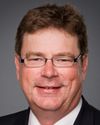Just one moment.
On a point of order, Ms. Hoeppner.
Evidence of meeting #44 for Public Safety and National Security in the 41st Parliament, 1st Session. (The original version is on Parliament’s site, as are the minutes.) The winning word was terrorist.
A recording is available from Parliament.
4:30 p.m.
Conservative
4:30 p.m.
Conservative

Candice Bergen Conservative Portage—Lisgar, MB
If I'm correct, and maybe you can provide clarity on this, when we have officials here their role is to provide direct information, not to comment on political matters or matters of policy.
4:30 p.m.
Conservative
4:30 p.m.
Conservative

The Chair Conservative Kevin Sorenson
Yes, I am aware of it. He did draw a reference to the actual strategy here on page 10.
4:30 p.m.
Conservative

The Chair Conservative Kevin Sorenson
I was listening to that, but it was in reference to something that was in the strategy we've been presented with.
4:30 p.m.
Conservative

The Chair Conservative Kevin Sorenson
And again, that's right: Departmental officials are not expected to answer political questions.
4:30 p.m.
NDP

Jean Rousseau NDP Compton—Stanstead, QC
I understand that completely, no problem. But I was referring to the fact that, in politics, it is normal for governments to have opponents.
Can you explain why groups who are peacefully standing up for the environment and aboriginal groups who are standing up for their ancestral lands are considered threats to national security? Why are you devoting resources and staff to spy on what we consider to be inappropriate targets?
4:30 p.m.
Director General, National Security Policy, Department of Public Safety and Emergency Preparedness
Thank you for the question.
I first want to reiterate a point the minister has made a number of times, that the pursuit of lawful political activity or protest, whatever its character, is a fundamental right in Canada. I don't think anything in the strategy talks against that or suggests otherwise.
I think the strategy actually distinguishes between a legitimate activity and criminal activity. There's one reference to environmental activism, and I think it's prefaced by violence linked to this kind of activity. The reality is that there have been six attacks on natural gas pipelines in Canada in the last number of years, so it's a real threat.
The other point I made earlier is that each year we've undertaken to update the threat assessment. We'll look at that and whether that characterization needs to remain. But to go back to my message, there's nothing in the strategy here or nothing that anyone is trying to imply that would suggest that lawful activity or protests are not valid.
4:35 p.m.
NDP

Jean Rousseau NDP Compton—Stanstead, QC
In the light of what happened in Toronto a few days ago, the real threat to public safety, in our opinion, is street gangs. Are they always considered terrorist groups or a danger to society?
4:35 p.m.
Director General, National Security Policy, Department of Public Safety and Emergency Preparedness
No. I think they're considered criminal groups. If it were a federal issue the RCMP would be involved, but I imagine that's being dealt with by the Toronto police, but I can't comment on the issue.
4:35 p.m.
Director General, National Security Operations Directorate, Department of Public Safety and Emergency Preparedness
On top of what my colleague Mr. Davies has said, I think it is important to recognize that the Criminal Code is quite clear on the criminal offences relating to terrorism, including support and facilitation of terrorist activity, and on what constitutes a terrorist activity. Also, the international conventions and protocols of the United Nations, to which Canada ascribes, are quite clear on what activities constitute a terrorist activity. There's also the legal aspect in the criminal law that we also have to be mindful of.
4:35 p.m.
NDP

Jean Rousseau NDP Compton—Stanstead, QC
Okay.
Does the strategy mean a new approach to the fight against terrorism? With all the action plans, the command structure and the division of resources, how are you going to make sure that there is good collaboration and synergy between all departments, interest groups and provincial and federal police forces? How are you going to make sure that there will really be a clear and efficient exchange of information between the various groups?
4:35 p.m.
Director General, National Security Policy, Department of Public Safety and Emergency Preparedness
That's a good question. I think what you've hit upon is the work plan for the national security branch of Public Safety over the next year. Our job now is to shift to implementation.
What we're doing is that we're looking at each of the pillars. We're creating clear work plans around each of those. They're based on the principles, the partnership as you said, not just the portfolio of Public Safety and the entire security intelligence community, but also the provinces, the municipalities, the non-governmental organizations, the private sector, and so on to figure out how we want to move forward in each of those pillars, in terms of prioritizing legislative, policy, and program gaps, and so on. That will be a very important part of our work over the next year.
4:35 p.m.
Conservative

The Chair Conservative Kevin Sorenson
No, your time is up.
We'll now move back to the government side and to Mr. Rathgeber, please.
June 5th, 2012 / 4:35 p.m.
Conservative

Brent Rathgeber Conservative Edmonton—St. Albert, AB
Thank you, Mr. Chair.
Thank you to both officials for your attendance here this afternoon.
Following up on the question that Mr. Rousseau just asked with respect to information sharing and coordinated response, when I look at annex A of the document Building Resilience Against Terrorism, I see no fewer than 20 federal agencies listed with some sort of mandate with respect to counter-terrorism, everything from Border Services to the RCMP, CSIS, Health Canada, Finance, some 20 agencies.
How are they coordinated? How do they interact? Is there a lead agency and is there duplication of services or tasks somewhere, with all of those agencies providing some piece of the puzzle?
4:35 p.m.
Director General, National Security Policy, Department of Public Safety and Emergency Preparedness
I can start it from a policy perspective, and then Mr. MacDonald can talk from the operations side.
From the policy perspective, it depends on the issue. If we're talking about national security issues related to admissibility, that's kind of a different group. But it's a very similar group to the ones you see listed here, relative to countering violent extremism, for instance, when we're looking at extending the group beyond the traditional security intelligence community, to include departments like Canadian Heritage, Human Resources and Skills Development, and so on.
Public Safety takes a lead role in many of these issues, in many of the different ways of slicing national security, coordinating and leveraging expertise federally and working with the provinces and so on. The Privy Council Office also has a major role with the office of the National Security Advisor.
There are typically working groups, as you can imagine, with large numbers of people in the room, and they're fed upward through the director, director general, assistant deputy minister, and deputy minister levels. There are different committees, depending on what the issue is, and that feeds into advice to cabinet. A lot of our time is spent coordinating with other departments and agencies, for sure.
4:40 p.m.
Conservative

Brent Rathgeber Conservative Edmonton—St. Albert, AB
Working groups work well in situations like this, but if there's a call for an immediate response, for instance, September 11, 2001, who's in charge? Who's the lead agency? Who's in charge of coordinating Canada's response?
4:40 p.m.
Director General, National Security Operations Directorate, Department of Public Safety and Emergency Preparedness
Moving from the prevention pillar, what you're asking about is our moving into the response.... That's a very good question. In fact, the government has the federal emergency response plan, which is the document that guides how the government will respond to an event affecting the national interest, and Public Safety, through the Government Operations Centre, is the key hub.
All departments and agencies have their own legislative mandates, and they perform their duties according to that legislative mandate. However, from the Prime Minister down, the federal emergency response plan is structured such that key decision-makers are brought together, usually at the assistant deputy minister, deputy minister, and then cabinet levels. They are fed information, decision briefs, and factual points of what is going on in a crisis situation. Ministers have their responsibilities, according to their mandate, to undertake their activities. But overall, Public Safety, through the Government Operations Centre, is the nodule, the hub, that takes that information and provides it up to cabinet and, ultimately, the Prime Minister, if necessary.